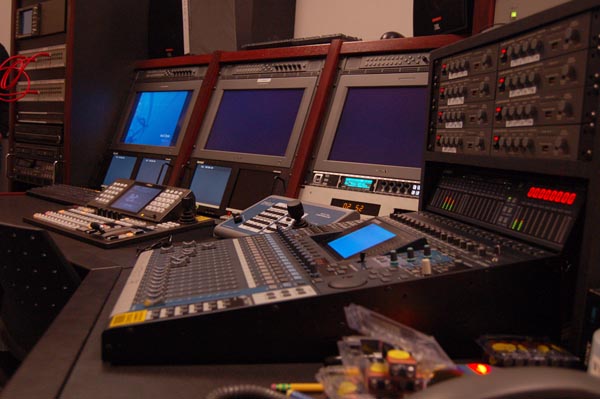Hi-def tools for future classrooms?

TC
Sac State is testing new high definition equipment like the ones shown here.:
April 26, 2007
The future of high-definition technology education has arrived at Sacramento State.
The Distance and Distributed Education Department at Sac State began testing its new high definition equipment this semester in Studio E in the Academic Information Resources Center.
Rose Leigh Vine, the director of the Distance and Distributed Education Department, is teaching Biology 124, the only class using the high definition studio this semester.
“I’m utilizing it. It’s a beautiful studio to broadcast graphical materials from,” Vine said.
Ken Forsyth, a network analyst for Sac State, said the project is following the footsteps of schools like the University of California, Berkeley and Stanford University. Berkeley calls its distance education classes online classrooms and has a sample online classroom that students can navigate to familiarize themselves to the web-based education, according to Berkeley’s distance website.
The main high definition equipment includes high definition cameras from Hitachi, a video switcher from FOR-A and an avid caretaker generator, Forsyth said. There are no plans to buy more products.
Spencer Freund, former Chief Information Officer, said the cost of the equipment was about $150,000. It was about the same amount as the equipment for other studios around campus since those studios were built earlier and the price of technology for those studios was higher in the past, he said.
Freund said the money for the high-definition equipment was funded through grants from the state and from rollover contract money with third parties like Cisco and Avia.
Susan Holl, a professor of engineering, said any new equipment purchased for the school should be high definition.
“Just because we are moving in that direction, I am not sure if the new equipment was immediately necessary,” Holl said.
Forsyth said Sac State’s technology, as far as streaming live and archiving, is at about the same level as Berkeley and Stanford. The direction of how much expansion this program decides to go should be up to the faculty, he said.
“This has to be faculty-motivated. Where this needs or wants to go needs to be decided by the faculty,” Forsyth said.
He said he already has five or six professors who want to use the studio next semester.
Shannon Datwyler, an associate biology professor, is not one of those six. She said she has no interest in teaching a distance education class.
“It doesn’t work with my teaching style, and cannot work if discussion is an important part of the course,” Datwyler said.
But Vine said she has four classes she will be teaching next semester through the studio and said the equipment has been well-received by students taking her course.
“They love it because in the graphics that we use, it’s such high detail, particularly in the cells that are small microscopic structures and sometimes aren’t seen as well,” Vine said.
Alex Lopuga, a student assistant to Forsyth for two years, said he enjoyed being a part of creating the high definition studio. “I enjoy the fact that I get to work with lots of different equipment. I got a chance to experiment, research how it works and what I need to hook it up to,” Lopuga said.
Larry Vuong, a sophomore biology and chemistry major, said the distance education classrooms have some benefits, like not having to travel to class and being able to watch lectures as many times as you want, but he prefers learning hands-on in a physical classroom environment.
“I won’t pay that much attention and slack off. It won’t be as effective as going to a class,” Vuong said.
Forsyth said he believes students need the interaction of other students and faculty in a campus environment, but there are a lot of courses where students can take classes on the web and it can be just as effective.
Forsyth said Sac State needs to become more competitive against other schools in distance education.
“It is part of the solution for the future,” he said.
Gia Vang can be reached at [email protected]













































































































































